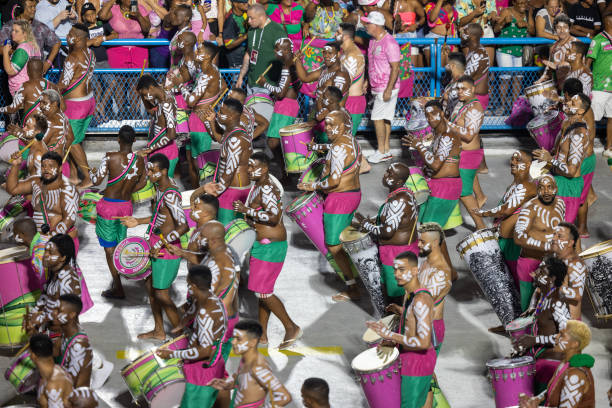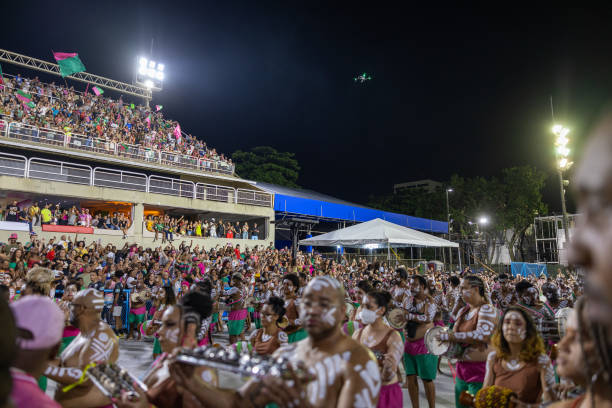Rhythm is the soul of Rio Carnival. It surges through the streets, pulses in the hearts of dancers, and electrifies the air in a way that words struggle to capture. At the center of it all stand the drummers—the unseen architects of momentum, the driving force behind the spectacle. With every flick of the wrist, every strike on the drumhead, they command the energy of the night, ensuring that the parade does not simply move but erupts into life.
These maestros of rhythm are more than percussionists; they are storytellers, guiding the samba schools through the most dazzling display of movement and sound the world has ever seen. Each year, thousands gather in the Sambadrome and in the streets beyond, but no matter how grand the floats, how intricate the costumes, or how hypnotic the dancers, it is the drummers who dictate the flow. Their hands move with precision honed by years of discipline, their instincts sharpened by an unbreakable connection to the music of their ancestors.

The bateria—a section of drummers in a samba school—is an orchestra of pure energy. Each member plays a distinct role, from the deep, resonant surdo that anchors the beat to the sharp, rapid-fire caixa that crackles through the night like sparks from a fire. The tamborins weave in and out, while the repique ignites call-and-response exchanges that keep the groove alive. It is a symphony of organized chaos, held together by the steady hands of the lead drummers who ensure that not a single beat is out of place.
Yet, the role of a bateria is not merely technical—it is spiritual. Samba is not just music; it is resistance, heritage, and celebration fused into sound. The drummers do not just strike their instruments—they channel history through them. Their rhythms carry echoes of Afro-Brazilian traditions, of communities that found power in music when all else was taken from them. To play in a bateria is to surrender to the rhythm, to be consumed by it. The music is not performed; it is lived, breathed, and exhaled with every fiber of one’s being.
As the Rio Carnival moves through the Sambadrome, the drummers act as both navigators and guardians of the performance. It is their timing, their precision, that determines the pace of the dancers, the surging intensity of the spectacle. A single misstep in the rhythm could ripple through the entire procession. But there are no missteps. The drummers are relentless, their hands moving with supernatural speed, their eyes locked in silent communication. They read each other’s movements, anticipating every shift, every crescendo, keeping the pulse unwavering.
Beyond the grandeur of the parade, the bateria extends its influence deep into the streets of Rio, where spontaneous samba circles erupt in celebration. The same disciplined hands that perform with military precision in the Sambadrome loosen under the open sky, giving way to raw, unfiltered joy. The drums carry the heartbeat of the city, uniting strangers in a common rhythm, a common pulse.
The magic of Rio Carnival is not in its scale, but in its heartbeat. It is the drummers who provide that pulse, their rhythms etching themselves into memory long after the festival ends. For a few nights, the world moves to their tempo, carried forward by the relentless energy of their hands. The flicks of their wrists are more than technique—they are the sparks that set the entire city on fire.
